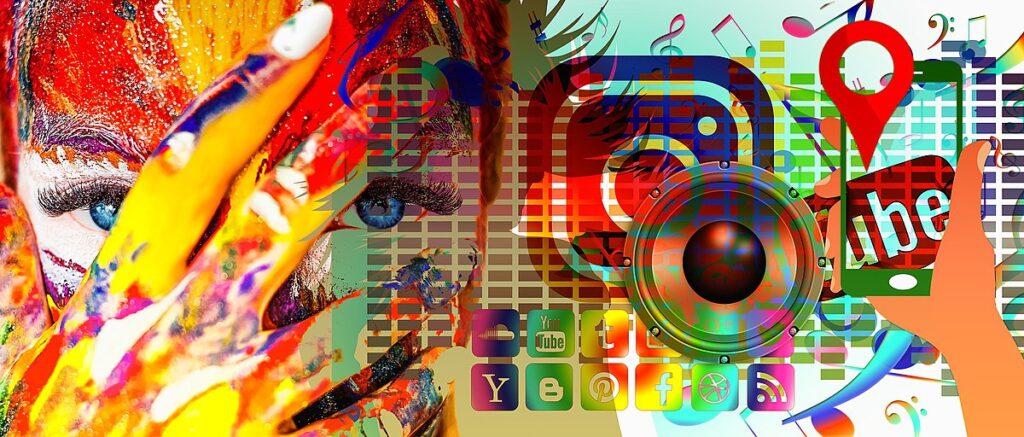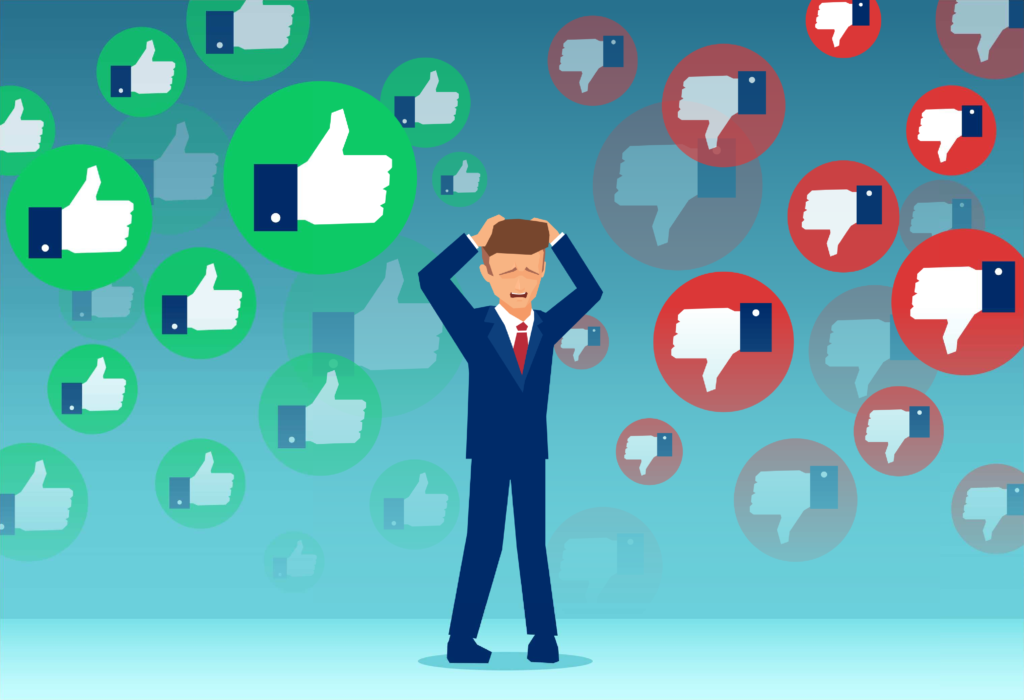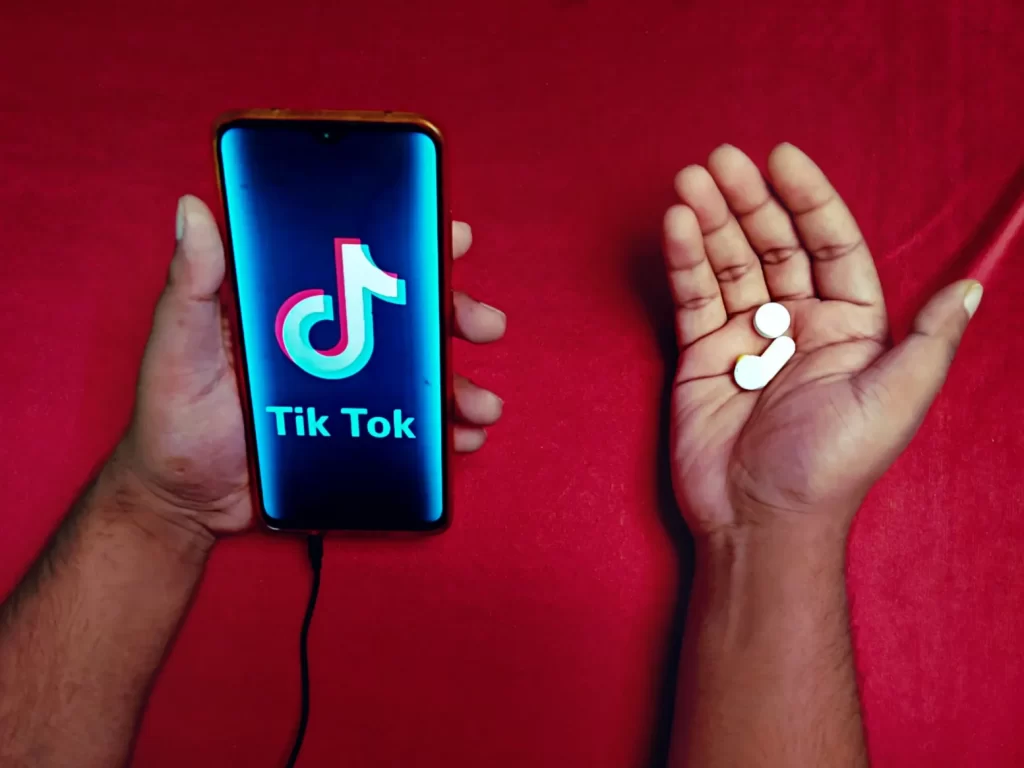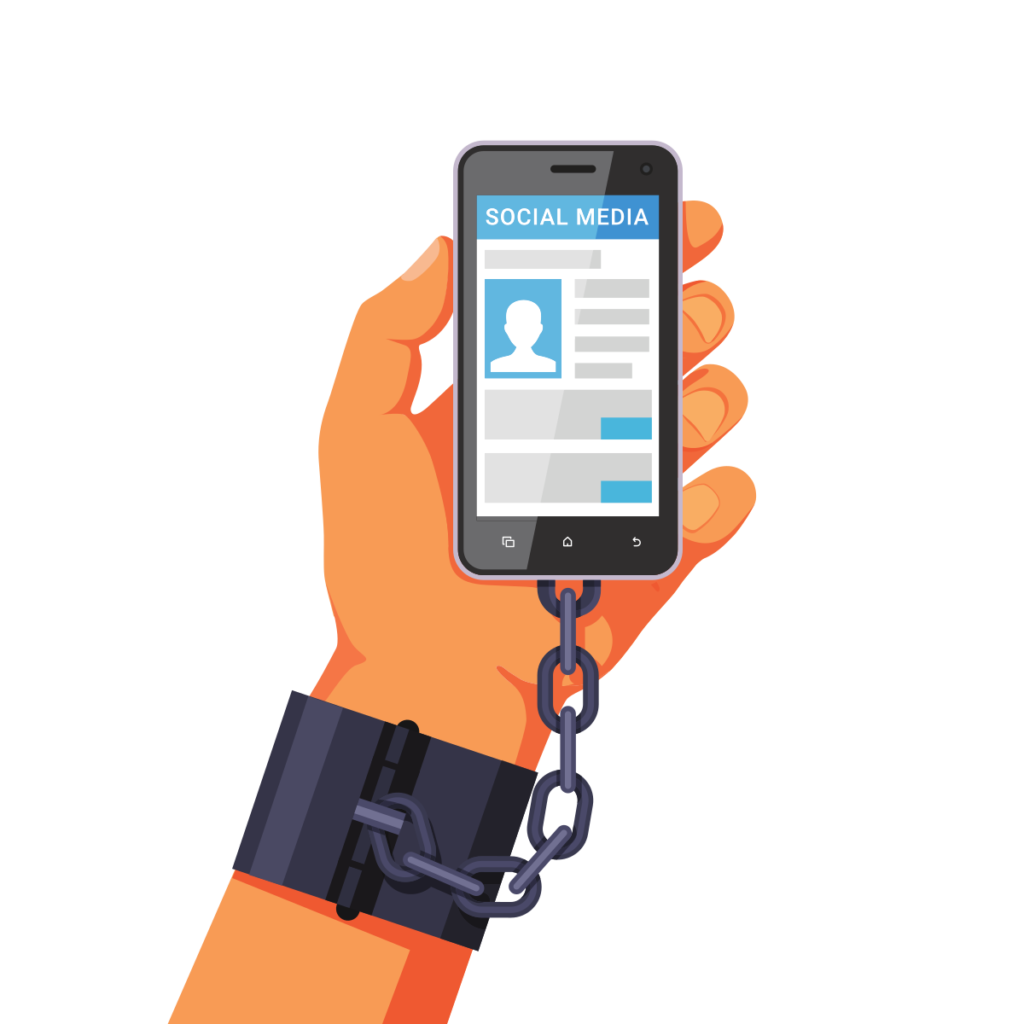What are the biggest social media platforms? Facebook. Instagram. Snapchat. TikTok. YouTube. WhatsApp. X. If you add together all the users of these behemoths, the amount totals to 12.13 billion as of 2024.
Facebook alone has 3.05 billion users, which is about 1/3rd of the planet’s population. 1/3rd of the planet’s population plugged into its feed every day. Scrolling through it mindlessly. Aimlessly. Endlessly. Something captures our attention. We glance at it briefly; don’t even read it fully. We click like, then continue to scroll.
When we aren’t locked into its feed, our phone sends us pings throughout the day to notify us of messages or notifications we have received; to lure us back in, to keep us lost inside its haze.
Whenever we enter the world of social media, we are prone to pointless processes like this. Processes that have no reward at the end. They simply feed our over-stimulated brains, to give them a buzz, and distract us from reality.
We feel good when we share a selfie of ourselves and get a bunch of likes. Really though, that little dopamine rush supplied by a like is only momentary. It acts like a drug, briefly providing elation, then, when the hit has passed, we are left feeling emptier inside.
Whilst social media can be positive if used sparingly, to keep in touch with loved ones or for educational/monetary pursuits, sadly, they were designed to addict us – their creators have even openly admitted so – therefore it is often difficult to minimise our usage.
Thus, countless people are brainwashed by these platforms. We use them incessantly, choosing to scroll rather than to live.
There was a time before social media, when everybody was happier and didn’t require the gratification of strangers; when you could walk down the street and passers by weren’t zombified, fixated on their screens.

So how did it happen? How did we become enslaved by these platforms?
To understand the dangers of social media, and how it became a global mass addiction, we must travel back in time to when these platforms were just beginning.
A Brief History of Social Media

In 1997, the first ever social media platform was created. SixDegrees.com, was a website where users uploaded a profile and then connected with others who also used the platform.
The name of the website stems from the “six degrees of separation” theory, which argues that all people are a maximum of six social connections away from knowing one another, and that two people can connect with each other through a “friend of a friend” system in six steps or less.
By the turn of the millennium, Six Degrees claimed to have over three million users, however, it failed to monetize its popularity and collapsed that year, due to a lack of revenue.
Two years later, in 2002, the social networking platform, Friendster, was founded, and launched the following year to initial success, gaining three million users in just a few months.
It set the foundation for many social networking sites today, wherein it allowed people to sign up through their email accounts and share content with fellow users.
Friendster’s two biggest competitors, MySpace, and, Facebook, were launched in 2003 and 2004 respectively. By 2006, MySpace was the most visited website on the planet. It is a platform where users create customisable pages, connect with others, and share music with their friends.
Piczo, was a similar platform launched in 2003, one which I used when I was a teenager. Me and my friends created completely customisable profiles – basically, we would design our own website – and we had a lot of fun using it.
It allowed us to express our teenage angst to full effect, thankfully, though (albeit not for the creators of the platform), it was made defunct in 2012, so I am unable to witness my embarrassing Piczo pages ever again.
Nevertheless, whilst MySpace dominated the industry from 2005 to 2008, being the most popular social media platform out there, Facebook was also building its own userbase, and from then onwards, it has left all other competitors in its wake.
Other notable early social media platforms (which still lead the industry’s worldwide supremacy) are Reddit (founded in 2005), YouTube (also founded in 2005), and Twitter (now known as X, founded in 2006).
During this early period, these platforms were positive influences on our lives. They allowed us to rebuild connections with old friends or family members who we hadn’t seen in years. Through them, we had access to a wide range of media sources which previously, weren’t publicised. This caused a surge in freethought and creativity. Happily, we immersed ourselves on the platforms, and had a great time doing it.
Then, in 2010, when older platforms were growing a bit stale, social media entered its renaissance phase. Instagram was launched and promptly highlighted just how much we love to post photos of ourselves and every aspect of our lives.
The following year, Snapchat happened – the first signal something was wrong with social media. Somewhere along the grapevine, the creators of Snapchat had heard that our attention spans were dwindling. The whole premise of their platform was for users to share photographs and videos that could only be viewed for a few seconds before being deleted. It launched to instant success.
But how did they know the population was becoming less attentive? Why, around this same time, did we find ourselves increasingly spending more time on these platforms, seemingly trapped inside their infinite loops of superfluous content, yearning for reactions to our own posts, resembling starved junkies, feeding off each like or share or comment, and afterwards, itching for another fix?
Well, disgustingly, for years now, these companies had conducted research on how to kidnap our minds so that they could keep us scrolling and generate more revenue. Through their findings, they implemented strategies to make their dastardly desires come true.
Now, we are hooked on these platforms, and because of this addiction, our mental health has deteriorated to the point where people are killing themselves because of it.
But how did these companies commit such covert villainy? The answers can be found in a Netflix documentary titled, “The Social Dilemma”.
The Dilemma of Social Media

“The Social Dilemma”, is an insightful but terrifying film that everybody needs to view. In fact, it should be a mandatory tool used in schools to inform students of the dangers of social media. My own opinions stem from watching this documentary, and for this article, I decided to rewatch it, to remind myself of why it had such an impact on my life.
On the documentary, interviews are held with former employees of all the social media giants I have discussed. These weren’t low-ranking staff either, they were the presidents, vice presidents, and developers of these companies.
Whilst being interviewed, they remember better times, none of them believe their platforms were initially designed to cause the consequential harm we see today, yet still, they sit there reflectively and ponder, where they went wrong.
They explain, we, the users, became mere commodities. Tech companies competed for our engagement to make them more money. They subtly manipulated us into doing what they wanted. They were paid substantially for products to be advertised on their platforms, to subconsciously sway us into buying these products, and thus, keep more money funnelling through for themselves.
Our data was collected for this purpose. To track what makes us who we are and to tailor the adverts we see in respect of this. Through this data collection, they came to know us better than we know ourselves, they hijacked our freedom of thought, and corrupted all sense of our free will.
It is shocking to hear but not unimaginable. How many times have you searched for a product on Google and then later, seen that exact same product advertised on your social media? Spooky, right? The reason for this is because these companies share your data between each other, passing your information around like a shisha at a bar.
The interviewees then discuss social media addiction. How even they themselves check their phones frequently throughout the day. The designers of our addictions became its unwitting victims too.
Dr Anne Lembke, the director of addiction medicine at Stamford University, goes on to explain how these platforms work like a drug, directly affecting the release of dopamine in our neural reward pathways, and because we were evolutionally designed to seek communities and find joy in them, the vehicle of social media holds massive potential for addiction.
Take for example, the react system, which was purposely created to make us addicted. Silicon Valley insider, Aza Raskin, states tech companies saw these features as “behavioural cocaine”. Like buttons can be found on every social media platform. The reason for this is because it keeps us hooked. Social media creators were aware of this, but they chose to implement these features anyway regardless of the outcome.
Nonetheless, with pleasure comes pain like with any other drug, and the more we seek pleasure online, the more our feelings of pain follow in hot pursuit.
This pleasure seeking has fuelled a narcissistic society wherein we present ourselves entirely different to who we really are just to attract more attention. We pretend to be happy, confident, outgoing people, yet internally, we harbour feelings of inadequacy, always comparing ourselves to everybody else, detesting them for what they have that we don’t.
Set amongst the background of the interviews is a fictional narrative where actors portray a modern family, and we see the impact social media has on their lives. It is particularly upsetting to watch the family’s youngest daughter who experiences depression because of her voracious online consumption.
Worryingly, it is our children who are suffering the most because of social media. On the documentary, Dr Jonathan Haidt, a social psychologist at NYU Stern School of Business, explains that upon the renaissance phase of social media, in the US, between the years 2009-2015, the number of girls aged 15-19 admitted to hospitals for self-harm rose by 62%, and even more startingly, in girls aged 11-14, cases rose by 189%.
Suicide cases rose in a similar vein during those years, with girls aged 15-19 taking their lives 70% more, and girls aged 11-14, 151% more. These are frightening statistics, and similar results can be found worldwide. Research has shown that young adults who regularly use social media are three times more likely to suffer from depression.

This is because social media has obliterated our minds. Generation Z were the guinea pigs for this new life model. They were the first generation to experience the entirety of their childhood using these platforms.
Through spending all our time online rather than out in the world, we have become more depressed, more anxious, and exceedingly more fragile.
We have stopped taking risks, we have lost our ability to form deep and meaningful relationships, and we constantly compare our appearance and lives to others, who themselves, deep down, might be racked by pain and self-loathing too.
Social media has fragmented exactly that which is contained within its name – being social, the very fabric of humanity. So many of us immerse ourselves online, yet in real life, we have very few if any friends.
In my previous article, “10 Tips for Defeating Depression”, I wrote that in 2023, 1 in 10 British adults were found to have no close friends.
For a species globally connected, able to reach out to one another easier than ever before, how this happened is beyond belief. It is because these platforms were sadly mutated to addict us rather than to let us use them in peace.
To understand this epidemic in much greater depth than I can construe in this blog, please watch The Social Dilemma. Your eyes will be opened, and hopefully, it will change your life.
There is one more recent social media platform I would like to discuss, one which I haven’t signed up for, and I never will.
It has proven detrimental on today’s society. More so than any other platform it has destroyed our attention spans and is gradually creating a generation of dumber and more mentally ill people. What platform is this you might ask? Isn’t it obvious? Why, TikTok, of course.
The Dangers of TikTok

Douyin was developed in only 200 days and within a year of its release, 100 million Chinese citizens were enthralled by the app.
You see, ByteDance had carefully analysed what makes social media so addictive. They utilised AI technology that was specially constructed to capture the hearts and minds of Douyin’s users – and not in the fairytale sense, no, it was to generate a social media app that was more addictive than any before.
They’d taken note of the worldwide decline in attentiveness caused by social media. They realised that if they only allowed users to upload short videos, they could capitalise on this loss of attention, and our dulled brains would relish the fleeting content.
When the app spread like wildfire across mainland China, ByteDance foresaw the opportunity to amass a global audience. So, under the brand name TikTok – one which sounds more friendly to outsiders – they launched the app internationally in 2017.
Through a series of genius marketing decisions, by 2018, TikTok took the world by storm.
ByteDance merged with fellow Chinese company, musical.ly, another short-video sharing platform that had an office based in California. They kept musical.ly’s data and accounts and learnt from them how to better manipulate their app’s interface to make it even more addictive.
Now with their foot in the American economy, they paid renowned celebrities and influencers to promote TikTok by sharing videos they’d filmed on the app. This caused TikTok to go viral, establishing it as one of the fastest growing social media platforms ever developed.
TikTok has now been downloaded more than 4.1 billion times and has over 1 billion active monthly users as of 2024. Little do all these users know though, that their brains are purposely being exploited.
ByteDance is required under Chinese law to share user information with the Chinese Communist Party. Now this might seem like a conspiracy theory, but after a quick search online, you will see that it is factual, and through this sharing of data, algorithms were implemented to manipulate what users witness.
Nations around the world are worried by this. Some countries grew so concerned they moved to outright ban it. Why? Because China is successfully using TikTok to damage our youth.
Due to the average TikTok video length being only 30 seconds, this has laid waste to people’s focus. Studies have found that people now have worse attention spans than goldfish. And if you are ever unfortunate enough to witness a TikTok video (which is hard to avoid even if you don’t use the app), you will understand why.
Users post the most ridiculous of videos. The app is littered with relentlessly tedious content: people dancing stupidly, lip-syncing like imbeciles, and expressing trauma or opinions that in years to come they will cringe inside rewatching, wondering why they ever filmed it.
The ramification on users’ mental health is devastating. TikTok’s algorithms intentionally push extreme content towards its users. When the highest percentage of users – at 25% – are aged 10-19, this is startling to ascertain.
Self-harm, eating disorders, and other mental illness related content were found to appear on children’s feeds. This saw a rise in young people experiencing these same mental illnesses.
Unbelievably, children are even developing Tourette’s syndrome because of the app. After spending hours watching videos about people who have the disorder, teenage girls especially, began to tic themselves – which is described as a sociogenic illness.
Whilst the youth of its competitors continue to degrade because of the app, China itself has in fact limited its own citizens’ usage of Douyin.
They understand how harmful it is, they don’t want their youth corrupted by it, instead, they want to build a powerful, focused army capable of taking over the world.
And while its enemies gradually grow dumber and more mentally weak – the Chinese government rubs its hands together and cackles at our misery, understanding that the future is theirs to seize. If you don’t believe me, click here and you will see.
So, what can we do about this? How can we take back our lives and limit our usage of TikTok and all these other apps?
How to Avoid the Dangers of Social Media

Whilst you might not perceive social media as being a problem, you are likely addicted to it without even realising. But to admit you have a problem would be to admit there’s something wrong with you, and none of us want to do that.
If you find yourself too engrossed by it, endlessly scrolling, posting your every thought, checking your phone every hour of the day for a notification that never comes – tell yourself, I need to stop this, I need some time away to reclaim my life.
The most obvious tactic to achieve this is to deactivate your social media accounts until you regain a semblance of freedom.
This is a technique I implement myself. Although I only have Facebook and Instagram accounts, most of the time, they remain deactivated, and I only use Facebook messenger to stay in touch with loved ones.
This was the initial purpose of social media – to stay connected with friends and family. We don’t need to sit scrolling through pointless posts to do this. All we need to do is message people to ask how they are.
Anyway, why do we need to know exactly what everyone is doing at every stage in their life? Where is the sense of mystery? That excitement about meeting somebody new has been eradicated. Now, we add them on social media and learn everything about them before we’ve even spoken face to face.
After taking time away from social media, the moment you return you will realise just how disingenuous it is. The things people post will appear frivolous and irritating, like everybody is submerged beneath a mass psychosis, they’re all drowning, unable to peek above its depths.
And when you realise this falsehood, hopefully, you will never fall victim to its evil clutches again. Because, in the end, on your death bed, you will glance back at all that time wasted scrolling through bullshit, and realise, Well fuck me, I can never get that time back.

2 responses to “The Dangers of Social Media”
I found this really fascinating to read; it’s scary what social media is doing to people nowadays!
Cheers man, the modern world is truly terrifying 😉